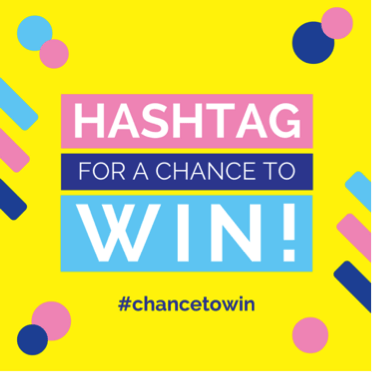Part of me always wanted to go into psychology, but I decided spending 12 years in school to earn a Ph.D. was a lot – and I wasn’t sure I could handle my own issues, let alone help countless others with theirs. The mind and the way it works has always fascinated me, so it’s no real surprise I ended up in marketing. After all, the two share a lot in common. Marketing doesn’t focus on helping people solve their problems like a therapy session, but it still involves using psychological tactics to communicate brand messaging – and stellar brands develop products and services to help their audience solve problems.
When I realized how much psychology and marketing are truly related and intertwined, I decided to go back to my love of the science to see how my tactics were working with the way people are naturally wired.
Try these hacks, and you’ll see your campaigns grow faster and better than ever before.
Overview
The Scarcity Effect – Fear of Missing Out (FOMO)
This all comes down to supply and demand. The rarer something is, the more people want it, and the more valuable it becomes. People don’t like to miss out on a good deal – whether it’s because it’s available for a limited time or because of limited quantity. Why do you think Black Friday is the biggest shopping day of the year, and people line up for hours before the stores open?
Take for instance the 1975 study that shows us just how much we’re wired to avoid missing out. Researchers had two cookie jars – one with 10 cookies, and the other with two cookies. Participants were asked to rate the cookies, not knowing that they were the exact same. The cookies in the jar with only two in it received much higher ratings than the jar with 10 – demonstrating that we place more value on what we think is rarer.
To make this work for you:
- “Only X copies available at this price!”
- “This limited-time deal only lasts until…”
- “Act now! This deal goes public in…”
Instant Gratification – Give People Rewards Immediately
Humans love instant gratification – we want what we want, and we want it now. We’re taught to practice and embrace delayed gratification with phrases like, “Be patient”, “Good things come to those who wait”, and “Hard work pays off”.
So, if we’re taught to delay gratification for better rewards, why are we driven by the seemingly constant desire to get rewards right this second? It comes down to our survival instincts – and needing food and water right now.
Fortunately for us marketers, that instant gratification wiring can apply to things outside our basic needs – applying to the desire for the latest and greatest.
Give people what they want in your content. If they do something you want them to do – say subscribe to your email list – give them a discount to your store that they can use for a limited time. It activates reciprocity, instant gratification, and the scarcity principle in one shot.
Make People Feel Good – Happy Headlines
People love to feel good – and articles that evoke positive emotion are more likely to go viral than those that are built around negative emotion. But, you have to get their attention with headlines, too. On average, 500% more people will read your headline than the copy.
Use a tool like CoSchedule’s Headline Analyzer to test headlines before you publish your content, and see what happens to your traffic.
Create a Bit of Mystery – We’re Naturally Curious Creatures
As humans, we love to figure things out – which means teasing with a secret is a wonderful way to capture attention. Take for instance the story of Social Triggers growth. Derek Halpern launched the website in 2011, and went from a relatively unknown blog to one of the best on the Internet in no time… because he created mystery.
He wrote about his growth, but didn’t say how he was achieving it, or that he was intentionally leaving those points out as a social experiment. People began to write their own blog posts, attempting to reverse engineer his success, so they could replicate it themselves. As a result, he got even more traffic and grew his readership, helping him grow even faster.
It’s the same reason we see all kinds of sites dedicated to rumors of the next big thing from companies like Apple and Samsung. We know they’re releasing new devices and products every year, and we know they keep things under wraps, but boy do we have fun trying to figure things out before the launch day!
Want to create some mystery on your own? Try these:
- “I can’t say anything yet…” used sparingly and appropriately
- Build your content calendar around upcoming product/service launches.
- Convert each benefit/feature coming in an updated edition into a blog post of its own, to create a series to keep people on the hook, rather than publishing a single overview post.
Use Social Proof
The theory of social proof suggests that people will follow along with the actions or recommendations of another group of people, as long as they like them or trust them. It comes from the desire to belong to a group – and can also be referred to as the “me too” effect.
The good news for you is there’s all kinds of social proof to choose from, and you can use more than one form – so long as it makes sense to do so.
- Expert: This is why influencer marketing works – because of the halo effect.
- Celebrity: We see it everywhere – Weight Watchers, Proactiv, Covergirl… the idea is that when a celebrity is properly matched to a brand, it can do wonders. But, if it’s not a good match, it can tarnish the brand image.
- Wisdom of Your Friends: You’re more likely to trust recommendations from people you know – so that’s why social widgets show you how many of your friends like a Facebook page, or follow an account on Twitter. When you know your friend likes or uses them, you’re more apt to check them out, too.
- Wisdom of the Crowd: McDonald’s and their Billions and Billions served on the sign – it’s about belonging to the crowd, and is tied to FOMO.
- User: User reviews, social fan counts, social share counts… anything that shows others are interacting with your brand.
Unconscious Branding
Even though we’re dealing with a lot of ad blindness, studies show that people process advertising, even if they’re not consciously considering it. How many times do you ask yourself, “Where have I seen that before?” When you do that – you’re trying to find a memory of unconscious branding. So, how can you make that work for you?
- Place your logo in your social media headers.
- Add your logo to blog post images.
- Use the same profile image on all social media platforms.
- Add branded images to your tweets and other social media posts.
- Add your logo to your email signature.
Avoid Fancy Fonts – Unless they Fit Your Message
Whether you realize it or not, the font you choose can have a dramatic effect on the number of people who are looking at your content. While it may be tempting to choose a font because it’s “different” or “looks pretty”, there are certain typefaces that work better to help you communicate your message – and matching it with your brand will help make a connection with your audience.
Use these guidelines to help you choose a font that will reinforce your message.
- Look and Feel: Look at the graphic below. Read the words, and notice how you get a somewhat confused feeling. It’s because the fonts just don’t match what the words are saying.
Source: Design Shack
- Placement: If you’re putting text on top of an image, it’s a good idea to make a box with your text, by ensuring the beginning and end of each line starts and finishes at the same place. You do this by adjusting font sizes on each line of text.
- One Font: You don’t have to use multiple fonts to create visual interest and highlight certain words. To keep your text from being a distraction on your image, use one font throughout. In the image below – which I grabbed from Canva’s template library – you can see the same font is used throughout the entire image…but it’s anything but boring.
Source: Canva
- Transparency: If you want to make the text in an image pop – instead of playing with colors and the fonts themselves, reduce the transparency on the image. It makes the background a bit lighter, without taking away from the image itself.
- Kerning: See the tiny space between each character in this text? That’s kerning. And when it’s off – either because the letters are too close together, or too far apart – that negatively affects the overall design.
Source: Wikipedia Commons
A quick note on pairing fonts:
Yes, I know I just said you don’t have to use more than one font in you design, but it is possible to pair them, as long as you know what you’re doing.
Source: The Branded Solopreneur
The Ambiguity Effect – Capture Interest
The ambiguity effect is the bias that means people will more than likely choose the product or service they know the results of, compared to one that they don’t. It lies in the underlying fear of the unknown. If you don’t have enough product information, or your product comes off as unfamiliar, buyers are much less likely to choose it. But – you can make use of this knowledge, and make it work for you.
To use the Ambiguity Effect in your own marketing efforts:
- Make use of statistics. People trust them, and will hardly ever take the time to do their own research. Use it to your advantage by making the research easy for them.
- Use metaphors: When giving customers options, do what you can to deliver it with a metaphor, too. This will help bring meaning, familiarity, and comfort to the decision-making process.
- Keep it easy. Whatever option you want your audience to choose, make sure it’s simple, clear, and concise.
Attention Bias
According to the Attention Bias, our perception is affected by recurring thoughts. For instance, people who think frequently about the clothes they’re wearing, tend to pay more attention to the clothes they see others wearing. Those with eating disorders pay more attention to food stimuli, while addicts pay more attention to the drug-related stimuli. This may impact memories, because they are more focused on the stimuli, rather than the details of the overall picture. It could translate to memory distortion, inaccuracy, or incompleteness.
Use it in your marketing by making it easier for people to think of you more often. Do this using any number of tactics, such as:
- Blogging regularly.
- Posting on social media every day.
- Re-sharing your content regularly.
- Posting your articles on other sites – like Huffington Post and Medium
- Guest posting original articles.
The Cheerleading Effect
The Cheerleading Effect says that seeing faces in groups makes them appear more attractive. It all comes down to belonging in a group in comparison to isolation. No one really likes to be alone all the time. The group mentality can be incredibly helpful in marketing, since naturally we’re wired to want to stay in a group where it is safe. Use this bias to your advantage in marketing by:
- Clustering a bunch of testimonials together, instead of listing just one or two.
- Displaying user reviews to demonstrate user engagement
You Don’t Have to be a Psych Major to Make It Work in Marketing
Though it may seem like you need to have a background in psychology to make it part of your strategy, the great thing is – the work has already been done for you. Massive amounts of research is already there to support these principles, and you’re not out to reinvent the wheel. You’re just out to effectively use human nature to get your desired result.
What kind of psychological principles do you regularly use in your marketing campaigns? How has using psychology to support your tactics improved your results? Share your experiences with me in a comment below.
Photo credit: Adobe Stock
Contact us today to get the conversation started!















